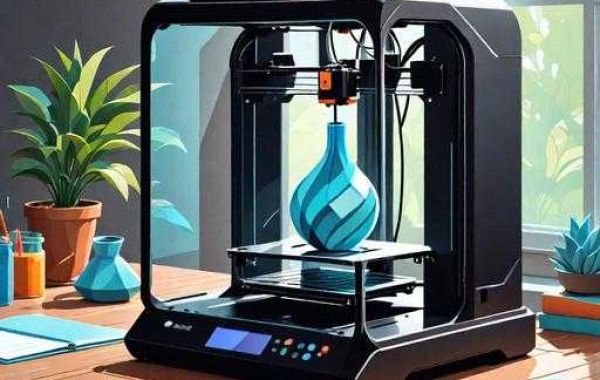So, you’ve recently bought an electric guitar and are ready to be part of the cool group of aspiring musicians? Well, your journey won’t begin until you’ve picked out your amp! Why do I need a guitar amp, you ask? A guitar amp is a valuable part of your instrument kit. It boosts your guitar’s volume controls its tone, and steadies its natural sound.
When it comes to purchasing your first guitar amp, there are several factors to consider. This piece will discuss some of the critical factors you should consider before buying a guitar amp.
Guitar Amp Size Portability
When buying your first guitar amp, determining the perfect size is an excellent place, to begin with. In terms of size, guitar amps range from small micro-amps to giant rigs. Get a small practice amp when you're just starting out on a guitar. Due to its smaller size, this amp is great for traveling musicians.
Guitar Amp Wattage
There are many myths surrounding the idea of the mandatory wattage needed for a guitar amp. Most classic amps are between 300 to 100 watts. You should also note that loudness doesn't necessarily double if you increase the number of watts. For instance, a 30-watt amp is merely 5 decibels shirker than the one with 100 watts.
Speakers
Most amps sound great when turned up nearly halfway. However, if your guitar amp doesn’t get turned up above 3, consider getting a smaller one. You must ensure the speakers are according to the amount of power the amp will generate. Some of the most used speaker configurations include a single 12-inch speaker and four 12-inch speakers.
Playing at Home Vs. Jamming On the Road
You don't really need a guitar amp that makes use of over 20 watts if you're playing at home. Having a high-powered amp at home basically equates to having a race car you can't drive over 20 mph. This may come as a surprise to you, but you don't need a lot of wattages to sound good. Similarly, most practice amps work on a single speaker between 8 and 12 inches.
Guitar Amp Tone Effects
The kind of music you'd like to produce will impact what type of guitar amp you want to buy. If you have a fundamental understanding of amp tones and features, it'll be really helpful in your final decision.
EQ Controls Settings
All amps have some kind of built-in equalization. These controls are labeled treble, mid, and bass and help you acquire the optimum level of tone. E.Q. is an essential component of any amp. These controls enable you to produce excellent sound in any environment as you can adjust the amp's frequencies to sound best, regardless of where you’re playing.
Distortion
Almost all guitar amps come with a gain knob that controls the amount of distortion in the sound. Heavy metal bands usually have a more solemn, distorted tone.
Digital Effects
Digital effects are an exciting feature in various types of guitar amps. But as a beginner, you shouldn't get carried away. Some amps have a wide range of digital onboard effects. Likewise, many professional guitarists use pedalboards they can tailor with several effects.
Multiple Channels
Some guitar amps also have a feature that can help you change between two or three channels featuring different sounds. You can achieve this by using the footswitch that enables you to switch between different channels. Some single-channel amps also contain a footswitch that turns the effects on and off on command.
Guitar Amp Quality
While all the features discussed above are fun to experiment with, the overall quality of the amp is of the utmost importance at the end of the day. Soundroads Amplification makes one of the finest quality amps with a comprehensive range of price tags and features. For instance, our Signature Amplifier Laurel Canyon Drive is fashioned after one of the most iconic guitar amps ever designed, the Dumble O.D.S.
Guitar Amp Flexibility
Another critical element of consideration when choosing a guitar amp is the kind of music you'll be primarily playing. A good practice amp will cover a wide range of musical styles, from jazz to heavy metal. Some professional players with a more specialized focus might choose an amp that produces their desired tone. But if you're a beginner, it's best to stick with an amp that offers the flexibility to play around with multiple styles. This way, you'll be able to learn before narrowing down on a specific tone.
Types of Guitar Amps
Several kinds of guitar amps are available in the market. The two primary kinds are tube and solid-state guitar amps. You'll also find hybrid guitar amps in the market, combining features of both tube and solid-state amps.
Solid-State Vs. Tube Guitar Amps
Most professional-level stage amps are run by tubes. Tube amps are characterized by their rich, thick sound and pleasing harmony. In contrast, solid-state amps are gradually improving and are preferred by some heavy metal professionals due to their tight bass.
As a beginner, you should use a solid-state amp as they're generally more reliable and don't require extensive maintenance. So, when you're looking for your first guitar amp, you should look for a solid-state one instead of a tube amp.
The Bottom Line
We hope this piece will be helpful for you when you set out to buy your guitar amp. Even if you aren't able to check off all the boxes in the provided checklist, you'll find a suitable guitar amp that meets and hopefully exceeds your musical needs.
If you're in search of a guitar amp repair place, Soundroads Amplification is the best place to visit. We have a wide range of high-quality guitar amps to choose from. So, if you're based in San Diego, California, and search for guitar amp repair near me, you'll find us at the top of the search engine ranking.







